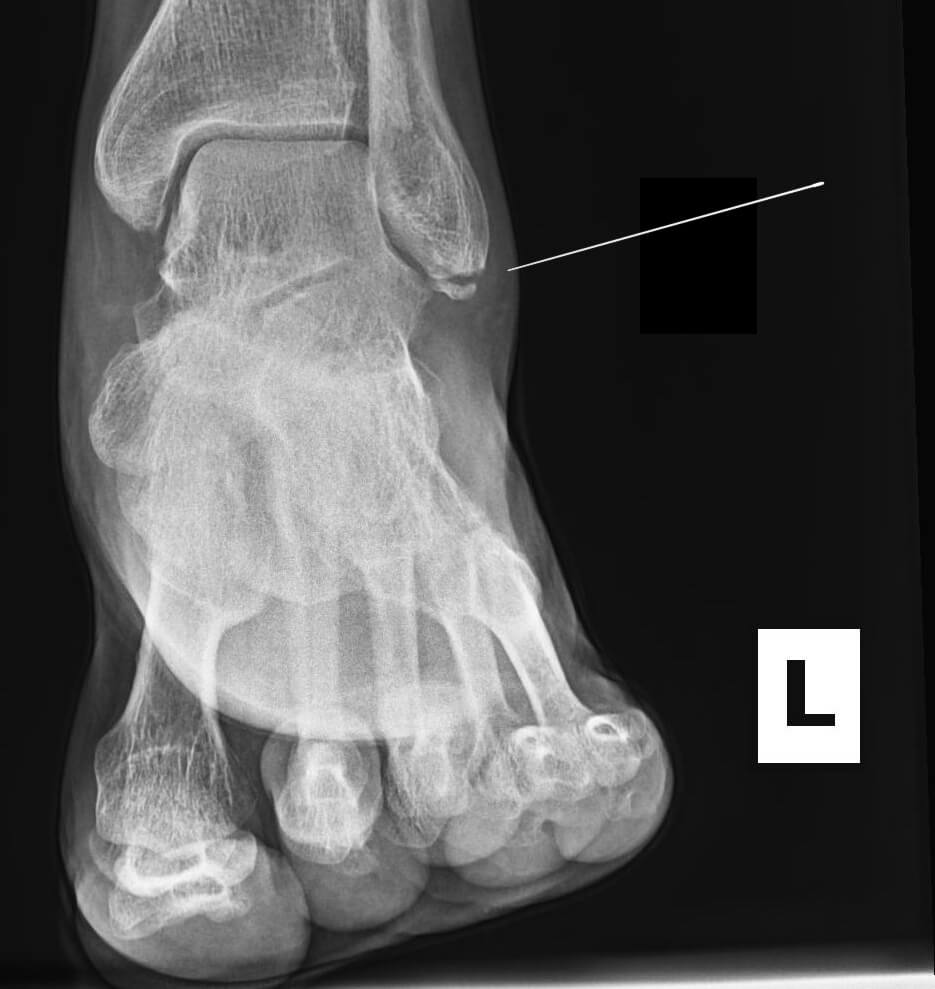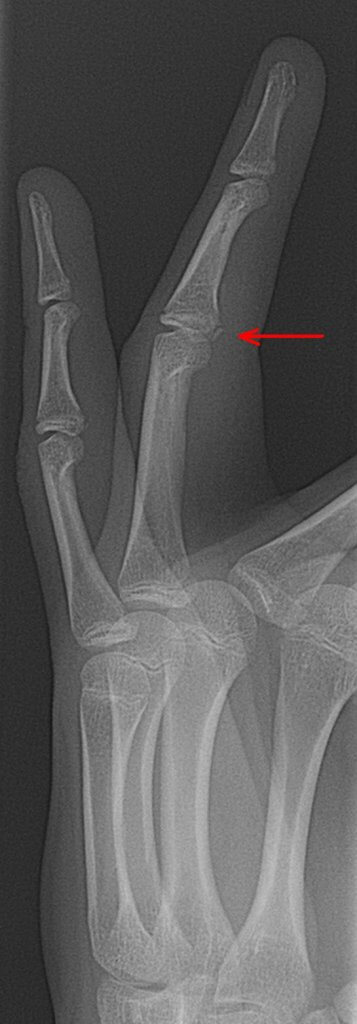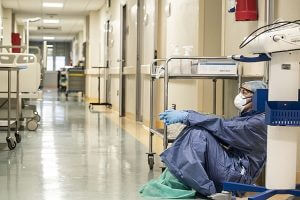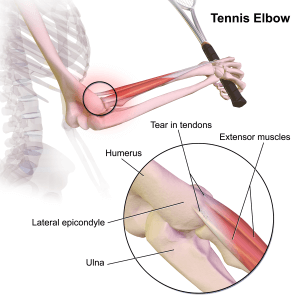Overview
The term fracture means a break and is used to describe the breaking of a bone. An avulsion fracture refers to a fracture that occurs when a small part of bone attached to a tendon or ligament gets pulled away from the main body of the bone. It mostly occurs when a strong ligament or tendon pulls at your bone with tremendous force pulling that piece with it. In this article, we will learn about common types of avulsion fractures and how you can get them treated.
The most common spots for avulsion fractures in people are the hip, elbow, and ankle. As for most of the physical traumas (accidental injuries), avulsion fractures occur in young people who play sports. However, it can occur anywhere in your body at the site of tissue attachment to the bone.
Types of Avulsion Fractures
The avulsion fractures can be classified into different types according to the location and the bone affected. Some of the most common ones are:
Pelvic Avulsion Fracture
Pelvic avulsion fracture refers to any bone fracture in the hips, buttocks, or upper thigh falls under the pelvic type. As mentioned above sudden forceful contractions of the muscles in your abdomen, thighs, hips, or hamstrings can be a cause of avulsion fractures. Growth plates in children and teenagers are soft cartilaginous part of the bone that allows growth (lengthening) of the bone. The soft nature of these growth plates can also be a determinant of pelvic avulsion fractures.
A sport involving forceful sprinting, jumping or rapid changes in angles and forces are often a cause of these fractures. Some of the sports include:
- Track sprinting
- Tennis
- Football
- Hockey
Fibular Avulsion fractures (ankle avulsion fractures)
Fibular Avulsion fractures refer to the outer thin bone of your leg, the fibula. It is present just below the knee down to making a part of your ankle. Whenever there is sudden inward rolling (inversion) of your foot, it can result in a fibular avulsion fracture. This inversion puts too much pulling force on the bone and breaks it.
Elderly women are more prone to fibular avulsion fractures due to osteoporosis. Osteoporosis is a bone-weakening disease that mostly affects women. Young athletes, especially football players, have very strong ligaments that can pull away from a part of the fibula in a sharp movement of the feet and legs.

Medial epicondyle avulsion fracture
You can also call this an elbow avulsion fracture as it involves your elbows. Baseball players, golfers of age 9-14 can experience this type of avulsion fracture. You can also touch the bony part on the inside of your elbow that is mostly affected.
Others
Other avulsion fractures that you might see are Mallet’s finger (a finger avulsion fracture) and jersey finger (a finger avulsion fracture).

Signs and Symptoms
The signs and symptoms of avulsion fractures differ according to the severity of the trauma (injury). You can experience the following symptoms:
- Pain – the pain could be severe as the bones are heavily supplied by the nerves.
- Swelling
- Bruising
- Bleeding
- Numbness
- Difficulty in moving – difficulty in walking if the fracture involves your ankle or difficulty in moving your fingers.
Causes and Risk Factors
The most common cause of avulsion fractures is a sudden movement or jerk of the muscles or ligament. As described above, forceful contractions of muscles and subsequent tendons result in an avulsion fracture. Some common causes are:
- Twisting of ankle
- Fall on legs, feet, or hands
- Hitting off a ball on your fingers
Athletes playing intense sports e.g., football and sprinting have strong tendons and ligaments that can break a piece of bone. On the other hand, weakening of the bone or a part of the bone can also result in avulsion fractures. Some of the risk factors include:
- Osteoporosis
- Vitamin D deficiency
- Calcium deficiency
- Hormonal disorders (e.g., excess parathyroid hormone)
- Lack of physical conditioning of your bones (i.e., laziness and lack of movement)
Complications
Usually, fractures are diagnosed and treated early on. However, an untreated avulsion fracture can lead to a deformity, non-union (no joining of bone), malunion (incorrect joining of the bone), extreme pain, and even disability.
Diagnosis
If you present to your doctor with a history of injury while playing sports, or doing some other physical work, with pain and swelling, your doctor will ask for an X-ray. Avulsion fractures can be easily diagnosed with the help of radiological techniques. A part of bone torn away can be seen on an X-ray. CT scan can be done to rule out other injuries.
Treatment
Many times, you would just need rest and some symptomatic treatment to reduce the pain and swelling you might have. You can be advised to take over-the-counter pain killers (NSAIDs), icing of the affected area, and using heat pads. Following your rest period, you can also go to a physiotherapist and do light exercises to strengthen your bone. The non-surgical treatment of avulsion fractures involving sports can be explained in five phases:
- Phase one –resting, icing, and protecting the injury
- Phase two – start light exercises to slowly increase the motion
- Phase three – progressive resistance training to help the injury and for strengthening
- Phase four – use of the injured area and all the surrounding muscles
- Phase five – preparation of a complete return to sports.
In case of a severe injury, you might need surgery to correctly align the bones and ligaments for proper growth.
Prevention
For the prevention of sports injuries, it is important to focus on warming up properly. You can also visit a physiotherapist or chiropractor to check the correct alignment of your bones. Strengthening exercises are also a useful method to prevent avulsion fractures.
You should always rest when you are having pain. Working or playing through pain can greatly increase your chances of injuries and fractures. You can also use protective braces and bandages to keep the bones in place.
- Ann & Robert H. Lurie Children’s Hospital of Chicago: “Medial Epicondyle Avulsion Fracture.”
- Children’s Hospital Colorado: “Pelvic Avulsion Fracture (Fractured Pelvis).”
- FootEducation: “Fibular Avulsion Fracture.”
- Handcare: The Upper Extremity Expert: “Jersey Finger,” “Mallet Finger.”
- Mayo Clinic: “Avulsion fracture: How is it treated?: What is the best way to treat an avulsion fracture in a young athlete?”, “Sprains.”
- McCoy, J.; Nelson, R. StatPearls [Internet]: Avulsion Fractures. Stat Pearls Publishing, 2021.
- Intermountain Healthcare: “Avulsion Fracture.”
- Pfenninger JL, et al. Fracture care. In: Pfenninger and Fowler’s Procedures for Primary Care. 3rd ed. Philadelphia, Pa.: Mosby Elsevier; 2011. https://www.clinicalkey.com. Accessed May 22, 2017.
- Marx JA, et al., eds. General principles of orthopedic injuries. In: Rosen’s Emergency Medicine: Concepts and Clinical Practice. 8th ed. Philadelphia, Pa.: Saunders Elsevier; 2014. https://www.clinicalkey.com. Accessed May 22, 2017.
- Miller MD, et al. Pelvic avulsion fractures. In: Essential Orthopaedics. Philadelphia, Pa.: Saunders Elsevier; 2010. https://www.clinicalkey.com. Accessed May 22, 2017.
- Laskowski ER (expert opinion). Mayo Clinic, Rochester, Minn. May 24, 2017.
- https://www.ncbi.nlm.nih.gov/pmc/articles/PMC6236480/
- https://www.webmd.com/a-to-z-guides/what-to-know-avulsion-fracture
The content shared in the Health Literacy Hub website is provided for informational purposes only and it is not intended to replace advice, diagnosis, or treatment offered by qualified medical professionals in your State or Country. Readers are encouraged to confirm the information provided with other sources, and to seek the advice of a qualified medical practitioner with any question they may have regarding their health. The Health Literacy Hub is not liable for any direct or indirect consequence arising from the application of the material provided.



